Showing 1–12 of 19 results

This volume on Tantra philosophy, having imbibed the art of reconstructive hermeneutical exegesis (tatparya-visodhana) synergizes. Abhinavaguptas tantragamiya philosophical thought process with literature, culture, history, metaphysics, Tantric praxis as well as aesthetics. It unveils the original internal thought process of Svatantracidadvaitavada, i.e. integral dynamic idealistic absolutism in its entirety.
This volume on Tantra philosophy, by a highly esteemed author, is an unparalleled work in the realm of philosophical reflection. Having imbibed the art of reconstructive hermeneutical exegesis (tatparya-visodhana), the learned author has synergized Abhinavaguptas tantragamiya philosophical thought process with literature, culture, history, metaphysics, Tantric praxis as well as aesthetics. With unbiased academic integrity and objective conceptual authenticity he has unveiled the original internal thought process of Svatantracidadvaitavada, i.e. integral dynamic idealistic absolutism in its entirety. In this millennial decade of the immortal Acarya Abhinavagupta, this work, by virtue of its analytical and investigative insights, will serve as an intellectual homage and will stand out amidst the published literature, whether in Hindi or English, on the subject.

It deals with the development and fundamental aspects of Buddhist Tantrism and its impact on paintings and the sculptural art of India. It discusses concepts and schools of Tantrism citing Buddhist Tantric works.
In (perhaps) secret defiance of the rigid prescriptive codes of the Buddhist monastic order cropped up a new, esoteric cultic phenomenon. Which, later known as Buddhist tantra, not just compromised Shakyamunis ethical legacy, but came to be administered by a whole host of mudras, mandalas, kriyas, caryas and mysteriously ritualistic elements, even hedonistic practices. Dr. Mishras book attempts afresh to investigate when, why and how emerged this secrecy-ridden cult: now a spiritual tradition in its own right. The author, who has had long, personal interactions with some of the living tantriks, here enters the dark alleys of Buddhist tantra to look for its nucleus, its evolution, its culmination, and the causes of its disintegration. Focussing, further, on the shifting philosophical tenets of Buddhism: from Hinayana to Mahayana, Vajrayana, Kalacakrayana and, finally, Sahajayana, Dr. Mishra spells out quintessentially the world-view of Buddhist Tantra and its path to nirvana or sukhavati: the abode of bliss, together with a wide range of tàntric concepts that remain guhya (secret) to the uninitiated. Also showing how Buddhist art, almost from the beginning, has been compellingly influenced by tantric practices, the book exemplifies the manifestations of this influence in the iconographic representations of the Buddhist deities, illustrated manuscripts, thangkas, and even in the use of colours by the Buddhist artists.
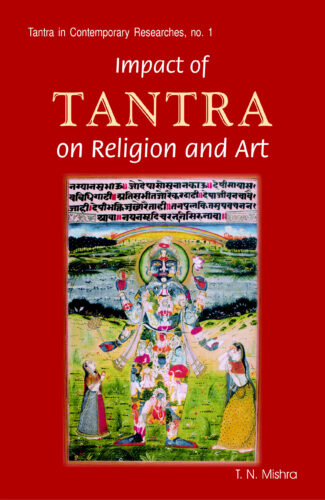
The book offers an account of Tantras evolution, cultic variations, culture, philosophy, mysticism, etc. and shows how tantrism has deeply influenced major Indian religions and the art tradition.
With its roots (perhaps) in the prehistoric times, Tantra is a unique, highly complex spiritual tradition of India. Which is hard to define and still harder to be grasped by the non-initiated largely because of its occult and mysteriously ritualistic elements, often accompanied by equally mysterious mantras, yantras, kriyas and even sexual practices. As a religious philosophy, this esoteric cult of Shakti: the female principle, seeks to discover the source of cosmic power within the human body through intensely specialized yogic activity. And, like yoga, it transcends religious boundaries. Introducing this non-Vedic, esoteric cult in an altogether fresh perspective, the book looks at tantra: both as a philosophy and as a spiritual tradition in its own right, and how tantrism has, in the past, been an irresistible influence not only on major Indian religions (Brahmanical Hinduism, Buddhism, Jainism), but on arts as well. Dr. Mishra authenticates his findings with evidence from numerous Vaishnava, Shaiva, Shakta, Buddhist, and Jaina texts on religion, philosophy, art and iconography. The author, who has had long, personal interactions with some of the living tantrikas, also tries to dispel certain distortions woven around Tantric religion to contextually offer an unbiased account of its evolution, cultic variations, culture, philosophy, mysticism, and cardinal concepts and tenets. Together with relevant visual material, Dr. Mishras work will, thus, evoke as much interest in discerning readers as in the scholars of Indian religions, traditional philosophy, arts and art history.
The Krama School of the Trika Saivism of Kashmir, more familiar as Kalikrama in the contemporary parlance, has turned out to be the most crucial among the monistic Saiva traditions of medieval Kashmir after the Pratyabhijna school, a scenario people could hardly envisage six decades back when it first came to the notice of modern scholarship. The doctrine of Kalikrama, lit. sequential order of consciousness deities called Kalis, constitutes the most pivotal aspect of this school marked by a synchronous resonance between the esoteric/Tantric and cognitive/metaphysical undercurrents of the system.
In order to delve deeper into the doctrine of Kalikrama the present monograph does some loud thinking in three important areas: (a) the role of cognitivization in the ultimate realization; (b) the theoretical background of the mystical experience built around the consciousness deity(ies); and (c) the inconclusiveness of the hidden meaning posing an epistemological barrier in the study of an esoteric Tantric tradition. In all these areas one cannot miss the imprints of Abhinavagupta’s profound contribution. As such, the present study journeys into three directions: (1) a short genealogy of modern Krama studies; (2) the epistemology of the esoteric internalization embodied in the doctrine of Kalikrama; and (3) the role played by Abhinavagupta as its foremost architect. As such, the present study needs be construed as a small step towards discovering the intrinsic epistemological ethos of an esoteric Tantric tradition.
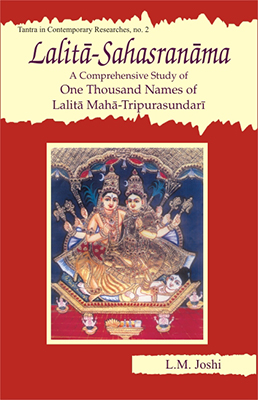
It analyses, for the first time, each of Sri Lalitas thousand names, through themes like the Goddesss anthropomorphic forms, abodes and ritualistic worship. It underscores the importance of Lalita-Sahasranama in philosophy, tantra, yoga, sahasranama literature, etc.
In the Hindu sacred literature, Sahasra-namas: the texts embodying literally “the Thousand Names” of a deity, constitute a genre in their own right. And Lalita-Sahasranama (LS) is a veritable classic in the traditional writings of the kind — a classic widely acknowledged for its lucidity, clarity and poetic excellence. A medieval work of unknown authorship eulogising Shakti: the Mother Goddess, this Sahasranama is not just a masterly exposition of Shri Lalita’s cult, but also sets out the deity’s diverse epithets — like, for instance, Kundalini, Nirguna, Saguna, Parashakti or Brahman — which continue to evoke reverence as mantras with ‘mystic powers’. Also included among these names are the goddess’s other panegyric descriptions that have come to have profound, esoteric connotations in tantric practices — epitomizing, thus, the fundamental tenets of tantrashastra. Here is a brilliant critical edition of Lalita-Sahasranama meticulously analysing, for the first time, each of Shri Lalita’s thousand names — by a variety of themes, like the Goddess’s conceptual representations, anthropomorphic forms, disposition, abodes, kinships/consorts, ritualistic worship, and her supremacy in pantheonic hierarchy. Also explaining and interpreting anew these thousand names on the basis of time-honoured commentaries, Dr. Joshi under-scores the high importance of Lalita-Sahasranama in philosophy, tantra, yoga, sahasranama literature, and rituals of various descriptions. The book includes the original Sanskrit text of LS, its romanised transliteration and, additionally, an Appendix listing Sri Lalita’s thousand names in the A-Z sequence.

It analyses, for the first time, each of Sri Lalitas thousand names, through themes like the Goddesss anthropomorphic forms, abodes and ritualistic worship. It underscores the importance of Lalita-Sahasranama in philosophy, tantra, yoga, sahasranama literature, etc.
In the Hindu sacred literature, Sahasra-namas: the texts embodying literally “the Thousand Names” of a deity, constitute a genre in their own right. And Lalita-Sahasranama (LS) is a veritable classic in the traditional writings of the kind — a classic widely acknowledged for its lucidity, clarity and poetic excellence. A medieval work of unknown authorship eulogising Shakti: the Mother Goddess, this Sahasranama is not just a masterly exposition of Shri Lalita’s cult, but also sets out the deity’s diverse epithets — like, for instance, Kundalini, Nirguna, Saguna, Parashakti or Brahman — which continue to evoke reverence as mantras with ‘mystic powers’. Also included among these names are the goddess’s other panegyric descriptions that have come to have profound, esoteric connotations in tantric practices — epitomizing, thus, the fundamental tenets of tantrashastra. Here is a brilliant critical edition of Lalita-Sahasranama meticulously analysing, for the first time, each of Shri Lalita’s thousand names — by a variety of themes, like the Goddess’s conceptual representations, anthropomorphic forms, disposition, abodes, kinships/consorts, ritualistic worship, and her supremacy in pantheonic hierarchy. Also explaining and interpreting anew these thousand names on the basis of time-honoured commentaries, Dr. Joshi under-scores the high importance of Lalita-Sahasranama in philosophy, tantra, yoga, sahasranama literature, and rituals of various descriptions. The book includes the original Sanskrit text of LS, its romanised transliteration and, additionally, an Appendix listing Sri Lalita’s thousand names in the A-Z sequence.

The 24,000 verses long Manthanabhairavatantra is the most important and extensive Tantra dedicated to the goddess Kubjika who is exclusively worshipped in the Kathmandu Valley. The section, Kumarikakhanda, offered here in 14 volumes, presents Kubjikas unique historical importance in the extraordinary richness of the inner, spiritual dimensions of her cult.
The Manthanabhairavatantra is about 24,000 verses long and is divided into three sections (khanda). The one edited and translated here is the Kumarikakhanda. Along with the Kubjikamata, the Manthanabhairavatantra is the most important and extensive Tantra dedicated to the worship of the goddess Kubjika. Although originally an Indian goddess, Kubjika is almost exclusively worshipped in the Kathmandu Valley, where her cult has been kept scrupulously secret by Newar initiates for centuries. Almost all the manuscripts of her Tantras and related literature have been found there.
Kubjika is a powerful development of Malini, the principal goddess of the Trika Tantras and Kali of the Kashmiri Krama tradition. Her cult belongs to a chain of early Kaula systems that culminate with that of the goddess Tripura and so sheds considerable light on them. Kubjikas unique historical importance is mirrored in the extraordinary richness of the inner, spiritual dimensions of her cult. These are explored in detail in the introduction to the edition and translation of the text with extensive references from mostly unpublished Kubjika Tantras and those of related schools.
The work took close to two decades to produce. In this time numerous working editions of unpublished Tantras and related texts were prepared by the author with the help of a team of five trained assistants.
Precognitive dreams appear to predict the future through a sixth sense. Historically, there are a lot of references to precognitive dreams responsible for great discoveries and showcasing big happenings. This volume is an attempt to illuminate and rediscover precognition in dreams in a different perspective of investigation in the light of Kashmir Saivism about reality and consciousness.
In the process, the book introduces readers to dreams and consciousness, underlining evidences, references and descriptions of the phenomenon. To enlighten one on the concept of precognition on the basis of reflectionism, it illustrates the Pure and Reflected Consciousness, and how one attains spiritual powers like precognition through japa, dana, tapa, puja and so on, based on the findings from Tantraloka and Pratyabhijnasastra. Further, it surveys the complete philosophical physiology of precognitive dreams with respect to concepts like pramata, prameya and pramana.
While establishing a uniform principle lying in the back of precognition, it lets future scope for investigation on precognition and the myssteries of this phenomenon, giving the book a high referral value to all in the field of psychology and parapsychology.

Saktapramoda is a liturgical paddhati-style compendium of sixteen independent ritual manuals. Of the sixteen texts in it, ten are dedicated to the group of ten Great Tantric Mahavidyas and, Kumari Tantra, which is another allied one devoted to the worship of a young maiden (Kumari). The rest are devoted to five deities: Ganesa, Vishnu, Shiva, Durga and Surya.
Shktapramoda of Deva Nandan Singh is a liturgical paddhati-style compendium of sixteen independent ritual manuals. The first ten works, comprising the major part of the text, are dedicated to the group of ten Tantric goddesses, referred to as the Ten Great Mahavidyas or Ten Supreme Powers the goddesses Kali, Tara, Sodashi, Bhuvaneshvari, Chinnamasta, Matangi, Tripurabhairavi, Dhumavati, Bagalamukhi and Kamala. The next important text closely allied to the worship of the goddesses is the Kumari Tantra devoted to the worship of a young maiden (Kumari). The next group of works comprises the pentad of Tantras devoted to five deities: Ganesha, Vishnu, Shiva, Durga and Surya. These five deities are invoked in almost all forms of ritual worship prescribed by the Vedas, Puranas and to a degree by the Tantras.
Each Tantra describes the dhyana of the deity, the yantra, mantras and the method of Tantric form of worship of the deity, along with praise hymns, protective formulas (kavaca) and litanies of divine names, be they a group of hundred names (shatanama) or a thousand names (sahasranama).
The first edition of Shktapramoda was published by Raja Deva Nandan Singh, an aristocratic zamindar of Muzaffarpur, Bihar, in the nineteenth century. The present edition brings together a fully edited and revised text with an elaborate introduction (in English), and a comprehensive index along with lithographic images of Tantric deities.
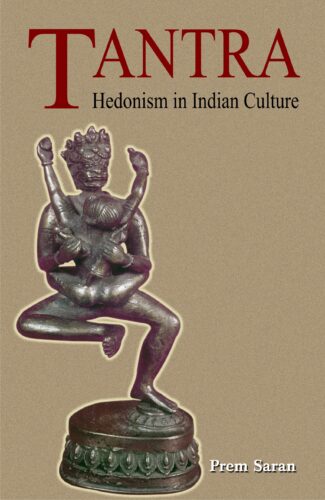
This is a cultural-anthropological study exploring those hedonistic aspects of the pan-Indian heritage which affirm that the pleasurable, especially the sexually pleasurable, is natural as a means to achieve the highest mystical experience.
This is a brilliant cultural-anthropological study exploring those hedonistic aspects of the pan-Indian heritage which, represented by centuries of the non-Vedic, Tantric tradition, affirm that the pleasurable, especially the sexually pleasurable, is natural as a means to achieve the highest mystical experience. Himself a Tantric initiate, Prem Saran offers a compelling, sympathetic analysis of Tantrism, its place in the Bengali and Assamese cultures, and its pervasiveness in pan-Indian thought and ritual generally. Prem Saran’s is also a cultural critique of modern Indian values and life-ways. In addition, it is an exercise in methodology, employing certain anthropological tools and concepts like Cultural Debate, Cultural Criticism, Hindu Renaissance and Pizza-effect the last three having been developed by the late Professor Agehananda Bharati whom the author acknowledges as a constant source of encouragement during the last decade.
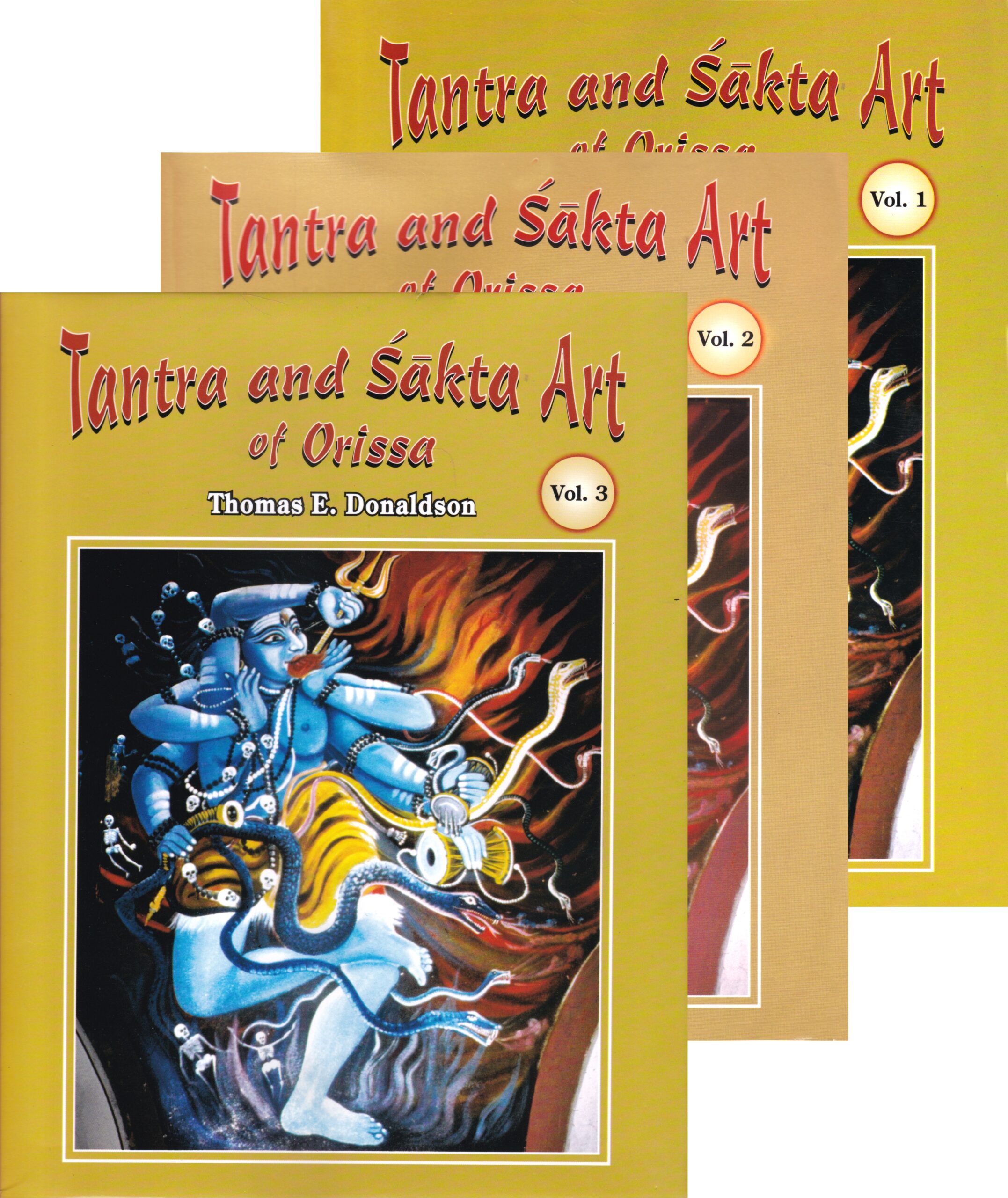
Here Prof. Donaldson presents a rich and variegated picture of the sakta/tantra art of Orissa, highlighting the evolving iconography of individual images. He focuses on different forms and depictions of the Goddess as Sakti, painstakingly analysing the architecture of a number of temples and their images.
The emergence of Tantrism and Shaktism in the sixth-seventh centuries in ancient India symbolised a belief in fertility worship, worship of the female principle with the Devi/Goddess supreme as the Energy/Power the substance of everything, pervading everything. In Orissa in particular, the shakta/tantra cults played a major role in the religion and culture of the region and this is testified by its many temples and sculptural wonders therein. In this work, Prof. Donaldson presents a rich and variegated picture of the shakta/tantra art of Orissa, highlighting the evolving iconography of individual images. Based on largely first-hand study of the temples and their iconography and also referring to various textual sources, he deals with, in detail, the shakta mythology of the region along with its depiction in iconography. He focuses on different forms and depictions of the Goddess the Matrikas, Camunda, Naga/Nagi, Manasha/Jaratkuriu, Tara, the Mahavidyas, the Yoginis and Dakinis and images of Purusha/Prakriti, Agni/Soma and Linga/Yoni, Painstakingly analysing the architecture of a number of temples and their images. The work abounds in photographs (more than seven hundred) revealing the variety of forms of the Goddess and their widespread distribution and provides many maps, diagrams and iconographical charts as well. A thorough research giving attention to minute details even while studying a wide range of iconographical traditions and forms, this work will prove an indispensable source book for young as well as established scholars.
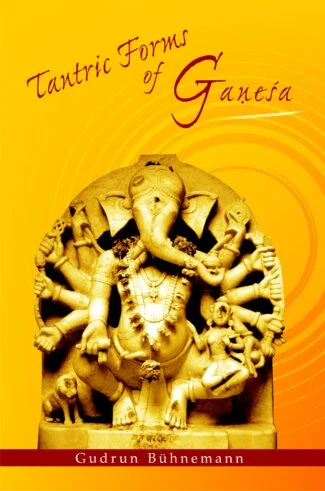
There may be many publications dealing with Ganesa, but only a few take original Sanskrit texts into consideration. Since the Tantric aspects of the deity have been studied too little, this book details fourteen forms of Ganesa as described in the Vidyarnavatantra.
Although the number of publications dealing with Ganesha is not insignificant, few take original Sanskrit texts into consideration. The Tantric aspects of the deity have certainly been studied too little. This book contributes to our knowledge of this less familiar side of Ganesha. It describes his forms according to the Vidyarnavatantra, a large compilation on mantrashastra attributed to Vidyaranya Yati and compiled around the seventeenth century. This text gives the iconographic peculiarities, mantras, and yantras of fourteen forms of Ganesha as well as instructions for the ritual application of the mantras.
| There are no products |